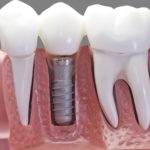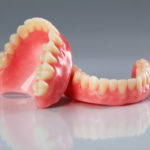
Gum disease, also known as periodontal disease, is an infection in the gingival tissues of the mouth. Gum disease can develop rapidly, and many people don’t even know they have it.
Early-stage gum disease is nothing to be afraid of. But if left untreated, gum disease complications can range from embarrassing to life-threatening.
Some of the most common complications from untreated gum disease include the following.
1. Tooth Loss
When gum disease goes untreated, the supportive tissues holding your teeth in place weaken over time. As the gums weaken and become inflamed, they pull away from the teeth.
As the pockets between teeth and gums grow deeper, they create space for harmful bacteria to hide and multiply. The bacteria can cause an infection that leads to bone damage and weakened tooth structures. As a result, teeth become loose and fall out.
Gum disease doesn’t always result in tooth loss, but it is one of the leading causes of tooth loss in adults.
2. Swollen or Red Gums
Gum disease is often detected first by swollen or red gums. Gum swelling and redness occur because plaque and tartar have built up under the gum line. Besides the irritation, the build-up can also cause your gums to become tender and bleed when brushing.
If you notice that your gums are swollen or red, see your dentist as soon as possible for early treatment. Identifying the condition early can help reverse gingivitis with simple home care routines and a few dental visits.
3. Chronic Bad Breath
Halitosis, or chronic bad breath, can result from various factors, one of which is gum disease.
Amongst patients with gum disease, bacteria build-up is the primary source of bad breath. The bacteria release volatile sulfur compounds that cause a person’s breath to smell unpleasant.
In the case of gum-disease-caused halitosis, you can remedy the condition by treating the underlying gum issue.
4. Recessed Gums
Gum recession is a common sign of advanced gum disease. Over time, infected gums will begin to pull away from the teeth and recede downwards, eventually exposing the root and tooth socket.
Recessed gums can result in pain, sensitivity, and an unattractive appearance. In some cases, recessed gums may become so severe they require surgical correction.
5. Systemic Diseases
The negative effects of gum disease extend well beyond your mouth. Untreated, periodontal disease can increase your risk of developing several other critical conditions. The diseases include:
- Diabetes – People with gum disease are more likely to have diabetes, and patients with diabetes are more prone to developing gum disease. The bacteria that cause gum disease enter the bloodstream, travel to organs, and bind themselves to cells, causing an inflammatory response. The inflammation induces insulin resistance, making it difficult for your body to regulate blood sugar levels.
- Cardiovascular disease – Recent research has shown connections between periodontal disease and heart attacks. The association does not directly mean having periodontitis causes heart attacks or strokes, but the two have a strong correlation.
Periodontitis causes inflammation in your gums, which can enter your bloodstream. The inflammation can then reach other body areas, like your heart, and negatively impact body functions.
Gum inflammation can also contribute to increased C-reactive protein levels in blood vessels. The protein builds up in the arteries and restricts blood flow to the heart muscle — a condition known as arteriosclerosis. Atherosclerosis may increase your risk of a heart attack or stroke.
While gum disease is a prevalent condition, no one should have to live with the pain and its discomforts. Not everyone experiences complications as a direct result of gum disease. However, you should visit your dentist if you have any concerns about periodontitis. A professional will be able to diagnose and effectively treat the condition.
If you notice any signs of periodontal disease or other dental issues, contact Apollo Dental to schedule an appointment.








 Although Apollo Dental does not offer sedation options as part of your dental care with us, sedation is a popular resource in the dental industry that we believe our patients should know more about.
Although Apollo Dental does not offer sedation options as part of your dental care with us, sedation is a popular resource in the dental industry that we believe our patients should know more about.

